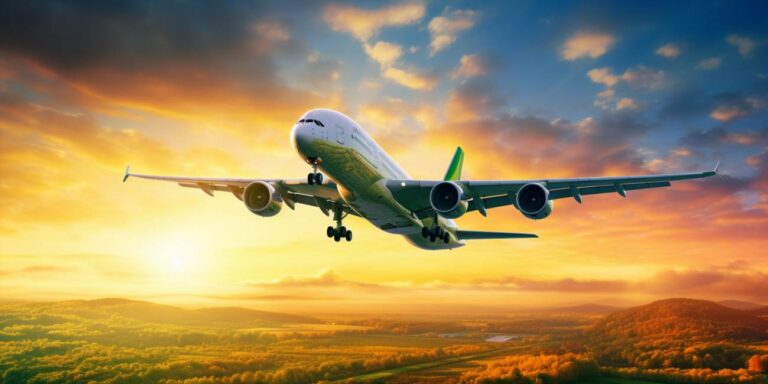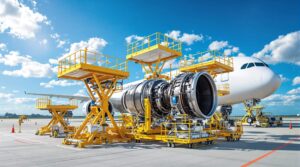Firstly, the Airbus A380 is a behemoth with a maximum seating capacity that can exceed 800 passengers in a typical two-class configuration. Its sheer size and impressive range make it an ideal choice for long-haul flights, allowing airlines to transport a substantial number of passengers with unparalleled comfort and efficiency.
The A380‘s iconic design comprises two full-length passenger decks, providing a spacious and luxurious environment for travelers. Airlines have seized this opportunity to offer innovative layouts, featuring extravagant amenities such as lounges, bars, and even shower facilities at 40,000 feet. This emphasis on passenger experience has made the Airbus A380 a preferred choice for flagship routes among various carriers.
Despite its grandeur, the Airbus A380 faced challenges in terms of demand, leading Airbus to announce the cessation of its production in 2019. The changing landscape of air travel, with a growing preference for fuel-efficient and more nimble aircraft, contributed to this decision. Nevertheless, the existing fleet of A380s continues to serve routes worldwide, offering passengers a unique and unparalleled flying experience.
As of the latest available data, there are approximately 250 Airbus A380s that have been delivered to various airlines globally. While this number may seem relatively modest compared to other aircraft types, each A380 represents a pinnacle of engineering and technology, showcasing the aviation industry’s ability to push boundaries and create iconic flying machines.
It’s worth noting that the Airbus A380 remains a symbol of prestige for airlines that operate it. The aircraft’s advanced technology, impressive range, and distinctive appearance continue to capture the imagination of aviation enthusiasts worldwide. As airlines continue to adapt their fleets to evolving market demands, the legacy of the A380 persists, leaving an indelible mark on the history of aviation.
The incredible size of the airbus a380 passenger plane
The Airbus A380 is a marvel of modern aviation, boasting incredible size and unmatched capacity. As the world’s largest passenger plane, it has captured the imagination of aviation enthusiasts and travelers alike.
The sheer dimensions of the A380 are jaw-dropping. With a length of 72.7 meters and a wingspan of 79.7 meters, this giant among aircraft can accommodate a staggering number of passengers. Its two full-length passenger decks provide an unprecedented 550 square meters of cabin space.
The aircraft’s capacity is another testament to its size. The A380 can typically carry around 555 passengers in a three-class configuration, but this number can go up to 853 passengers in an all-economy setup. This makes it the go-to choice for airlines seeking to maximize their passenger load on high-demand routes.
One of the most impressive features of the A380 is its luxurious amenities. Airlines have the flexibility to design the interior layout to include lounges, bars, and even private suites. This not only enhances the passenger experience but also sets the A380 apart as a symbol of opulence in the skies.
The aircraft’s impressive range is another factor that contributes to its popularity. With a range of approximately 8,000 nautical miles, the A380 can effortlessly cover long-haul routes, connecting major cities across the globe. This makes it a versatile choice for airlines operating on intercontinental routes with high passenger demand.
Despite its colossal size, the A380 is surprisingly efficient. Advanced aerodynamics and state-of-the-art technology contribute to its fuel efficiency, making it a relatively environmentally friendly option compared to other aircraft in its class. The A380 has played a significant role in shaping the future of aviation by pushing the boundaries of what is possible in terms of both size and efficiency.
The luxurious double deck cabins of the a380
The luxurious double deck cabins of the A380 redefine the epitome of aviation opulence. As passengers step into this airborne realm, they are greeted by an ambiance of sophistication and comfort, transcending the conventional norms of air travel.
Let’s delve into the intricacies of these double deck cabins. The seats themselves are a masterpiece, meticulously designed for the utmost comfort. In first class, passengers are treated to an exclusive enclave of plush recliners that seamlessly transform into fully flat beds, ensuring a restful journey. The attention to detail is unparalleled, with each seat adorned in the finest materials, creating an atmosphere of refined elegance.
Meanwhile, business class unveils a haven of productivity and relaxation. The seats are not merely seats; they are ergonomic workspaces that cater to the needs of the modern traveler. With ample legroom and customizable settings, passengers can seamlessly transition from work to leisure, making the journey as enriching as the destination.
Ascending through the decks of the A380, the upper deck is a realm reserved for those seeking the pinnacle of luxury. Here, the first-class experience reaches new heights with private suites that offer an unparalleled level of exclusivity. From personal in-flight entertainment systems to dedicated cabin crew, every detail is curated to elevate the journey to a realm of bespoke luxury.
The lower deck, hosting the business class cabins, is a testament to the harmonious blend of functionality and comfort. Passengers can unwind in their cocooned spaces, enjoying a curated selection of entertainment or immersing themselves in the panoramic views offered by the large cabin windows.
As we explore these double deck cabins, it’s evident that the A380 has redefined the in-flight experience. The seats, meticulously designed for both first-class and business-class passengers, elevate comfort to an art form. The decks of the A380 are not just physical levels; they are stages for a performance of unparalleled luxury in the sky.
The future of the airbus a380 planes
The Airbus A380, once hailed as the epitome of aviation innovation, stands at a crossroads as we ponder the future of these colossal planes. With the evolving dynamics in the aviation industry, the destiny of the A380 hinges on a delicate balance between production, orders, and the unwavering support of airlines.
In recent years, the production of the A380 has witnessed a noticeable slowdown. The demand for these mega planes, known for their double-deck configuration and unparalleled passenger capacity, has plateaued. Airbus, in response to the changing tides, has adjusted its production rates to align with the market reality. The giant assembly lines that once buzzed with fervor now echo a more subdued rhythm, reflecting the nuanced dance of supply and demand.
As for orders, they tell a tale of cautious optimism. While the initial fervor saw a flurry of commitments from major airlines around the globe, the reality is that securing orders for the A380 has become a more intricate dance. Airlines weigh factors beyond sheer passenger capacity, considering fuel efficiency, operational costs, and the evolving landscape of long-haul travel. The challenge for Airbus is not merely to secure orders but to redefine the narrative, making the A380 not just a plane but a strategic choice for airlines charting the skies.
Amidst the ebb and flow of production and orders, the airlines play a pivotal role. The success of the A380 is intricately linked to the vision of airlines that operate them. Some carriers continue to embrace the grandeur of the A380, seeing it as a symbol of prestige and luxury. These airlines are the stalwarts keeping the spirit alive. Yet, others have pivoted towards more fuel-efficient and versatile options, reshaping their fleets to adapt to the changing demands of the industry.
Looking ahead, the future of the A380 remains uncertain, yet pregnant with possibilities. Airbus, in navigating the delicate dance of production, orders, and the preferences of airlines, is crafting a narrative that extends beyond aviation. The A380 may not dominate the skies as it once did, but it persists, a testament to the ever-evolving landscape of aviation, where each takeoff signifies not just a journey through the clouds but a leap into the unknown.






